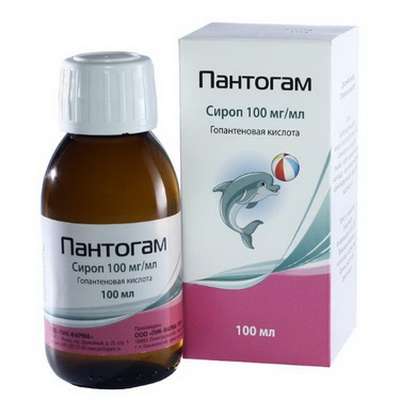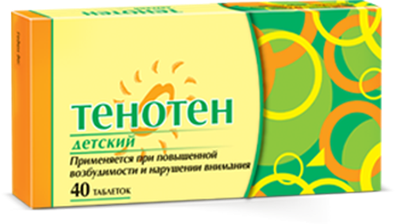Instruction for use: Arduan
I want this, give me price
Active substance: Pipecuronium bromide
Indications
Endotracheal intubation and relaxation of skeletal muscles with general anesthesia during various surgical operations, requiring more than 20-30-minute muscle relaxation in conditions of mechanical ventilation.
Contraindications
Hypersensitivity to pipecuronium bromide and / or bromine, severe hepatic impairment, age to 3 months (doses in children under 3 months of age are not defined).
pregnancy and lactation
The action category for fetus by FDA is C.
Clinical studies to demonstrate the safety of the use of pipecuronium bromide in pregnant women and fetuses are not enough. The use of pipecuronium bromide during pregnancy is not recommended. The minimum amount of pipecuronium bromide penetrates the placenta and is detected in the blood of the umbilical cord.
Clinical data on the safe use of pipecuronium bromide during breastfeeding is not enough. The use of pipecuronium bromide during breastfeeding is not recommended.
Cesarean section. In case of application for general anesthesia with cesarean section of pipecuronium, bromide does not change the Apgar scale, muscle tone and cardiovascular adaptation of newborns.
Side effects
The most common side effect of nondepolarizing muscle relaxants is the prolongation of the pharmacological effect for a longer period of time than is necessary for surgical intervention and anesthesia. Clinical manifestations can vary from the weakness of skeletal muscles to their deep and prolonged paralysis, which can lead to respiratory failure (apnea).
The list of side effects is given by the frequency of occurrence: very often (≥1 / 10); Often (≥1 / 100, <1/10); Sometimes (≥1 / 1000, <1/100); Rarely (≥1 / 10000, <1/1000); Very rarely (</ 10000); Frequency is unknown (can not be determined from available information).
From the side of the immune system: very rarely - anaphylactic and anaphylactoid reactions 1.
From the side of metabolism and eating disorders: sometimes - increased levels of creatinine, hypoglycemia, hyperkalemia; Very rarely - tetany.
Disorders of the psyche: very rarely - drowsiness.
From the side of the central nervous system: sometimes - hyperstasy, oppression of the central nervous system; Very rarely - paralysis.
From the side of the organ of vision: very rarely - blepharitis.
From the CCC: sometimes - stroke, thrombosis, myocardial ischemia, atrial fibrillation, ventricular extrasystole; Very rarely - arrhythmia, bradycardia, oppression of the heart, tachycardia and fibrillation of the 2 ventricles, arterial hypertension, arterial hypotension, vasodilation.
From the respiratory system: sometimes - respiratory depression, laryngospasm, atelectasis; Very rarely - apnea, dyspnea, hypoventilation of the lungs, bronchospasm, cough.
From the musculoskeletal system: sometimes - muscular atrophy, difficulty intubation; Very rarely - muscle weakness.
On the part of the hematopoiesis and hemostasis system: rarely - reduced activated partial thromboplastin time and PV, thrombosis.
From the side of the urinary system: rarely - anuria.
From the skin: sometimes - a rash, hives.
Laboratory indicators: very rarely - hypercreatininaemia, insignificant decrease in the level of potassium, magnesium, calcium in the blood plasma, increased glucose levels, increased urea concentration in the blood, a decrease in heart rate.
1 Anaphylactic and anaphylactoid reactions can sometimes occur with the use of nondepolarizing muscle relaxants, so you should prepare medications and equipment to stop the anaphylactic reaction. Pipercuronium bromide should be used with caution in the presence of an anamnesis of an allergic reaction to other muscle relaxants, since a non-polarizing muscle relaxant may form a cross-allergy. Histamine release and histamine-like reactions: pipecuronium bromide does not release histamine.
2 Pipercuronium bromide causes a slight hemodynamic effect, possibly due to a mild effect on the heart and vagolytic action (decrease in blood pressure, bradycardia), especially when halothane or fentanyl is used concurrently with anesthesia.
Precautionary measures
They are used exclusively in the conditions of a specialized hospital with the availability of appropriate equipment for ventilation and in the presence of an artificial respiration specialist due to the action of pipecuronium bromide on the respiratory musculature.
Careful monitoring of vital functions during the operation and in the early postoperative period until the complete restoration of muscle contractility is necessary.
When calculating the dose, one should take into account the technique of anesthesia used, possible interactions with drugs administered before or during anesthesia, the condition and sensitivity of the patient.
In the medical literature, cases of anaphylactic and anaphylactoid reactions are described with the use of muscle relaxants. Despite the absence of reports of such a side effect of pipecuronium bromide, it can be used exclusively under conditions that allow immediate treatment of such conditions.
Caution should be exercised when using pipecuronium bromide in patients who have a history of anaphylactic reaction caused by any muscle relaxant, because of the possible cross-allergy.
Doses of pipecuronium bromide causing miorelaxation do not have a significant cardiovascular effect and practically do not cause bradycardia.
The use and dose of m-holinoblokatorov for premedication are subject to careful preliminary assessment, should also take into account the stimulating effect on n. Vagus other concurrently used drugs and the type of operation.
To avoid a relative overdose of pipecuronium bromide and to provide adequate control over the restoration of muscle activity, it is recommended to use a stimulant of peripheral nerve fibers.
Patients with disorders of neuromuscular transmission, obesity, renal insufficiency, liver and biliary tract diseases, with a history of the transferred poliomyelitis should be given pipecuronium bromide in smaller doses.
In liver diseases, the use of pipecuronium bromide is possible only in cases where the risk is justified. In this case, the dose should be minimal.
Some conditions (hypokalemia, digitalisation, hypermagnesia, diuretic administration, hypocalcemia, hypoproteinemia, dehydration, acidosis, hypercapnia, cachexia, hypothermia) may contribute to lengthening or intensifying the effect.
Before the beginning of anesthesia, it is necessary to correct the electrolyte, acid-base balance and eliminate dehydration.
Like other muscle relaxants, pipecuronium bromide can reduce activated partial thromboplastin time and PV.
Pregnant women who took magnesium salts for the treatment of toxicosis (able to strengthen the neuromuscular blockade), pipecuronium bromide is prescribed in reduced doses.
Efficacy and safety of use in the neonatal period have not been studied. The therapeutic effect in infants from 3 months to 1 year practically does not differ from that in adults. Children aged 1 to 14 years are less sensitive to pipecuronium bromide and the duration of their therapeutic effect is shorter than in adults and infants (under 1 year of age).
Influence on the ability to drive vehicles and work with machinery. Within 24 hours after complete recovery of neuromuscular conduction, it is not recommended to drive vehicles and engage in potentially hazardous activities requiring increased concentration of attention and speed of psychomotor reactions.

 Cart
Cart





